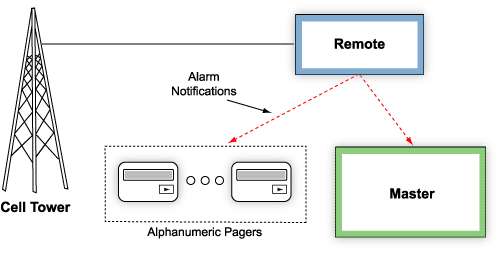Download our free Monitoring Fundamentals Tutorial.
An introduction to Monitoring Fundamentals strictly from the perspective of telecom network alarm management.
1-800-693-0351
Have a specific question? Ask our team of expert engineers and get a specific answer!
Sign up for the next DPS Factory Training!

Whether you're new to our equipment or you've used it for years, DPS factory training is the best way to get more from your monitoring.
Reserve Your Seat Today
This is a topology diagram for 16 tower sites. They all have LAN connection. This allows RTUs in NEMA enclosures to communicate back to your SNMP manager. The RTUs can also send email/SMS directly to smartphones.

Every operator of telecommunication towers and antenna structures knows the FCC's strict requirements for maintaining tower lights. If you can't monitor your tower lights 24 hours a day - and if you can't correct or give notice of light failures within 30 minutes - you're facing heavy fines and penalties.
Nowhere in your network is alarm monitoring more critical than your antenna towers. The right monitoring tool for the job is a small, cost-effective, and ultrareliable remote - remotes that can be inexpensively placed at all your remote sites and give guaranteed results for years to come.
When a light beacon at the top of a communications tower goes out, the FAA must be notified immediately and the beacon repaired swiftly or hefty penalties will have to be paid. Additionally, with the beacon light out, your tower becomes a hazard to low flying aircraft. Therefore tower lights must be monitored. Lack of monitoring can potentially cost tens of thousands of dollars in fines if outages go unreported, or even greater losses if an accident were to occur.
Sufficient monitoring of equipment, such as tower light beacons, is critical to avoiding fines imposed for outages and losses due to accidents that can occur. Protect against this by having personnel notified immediately if a light beacon goes out.